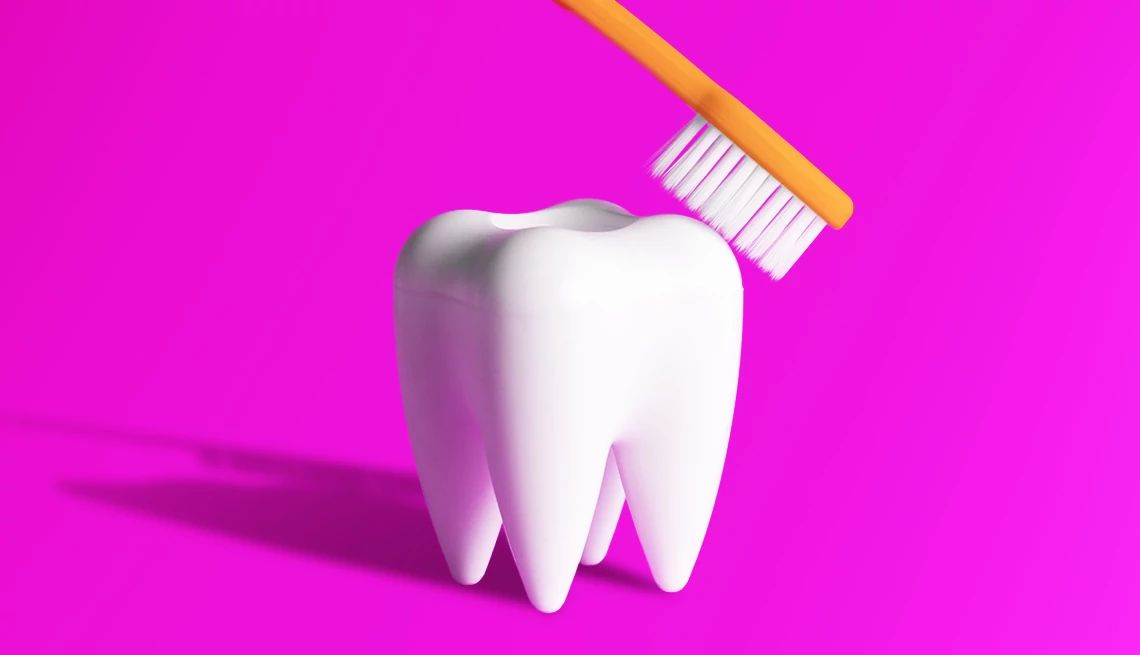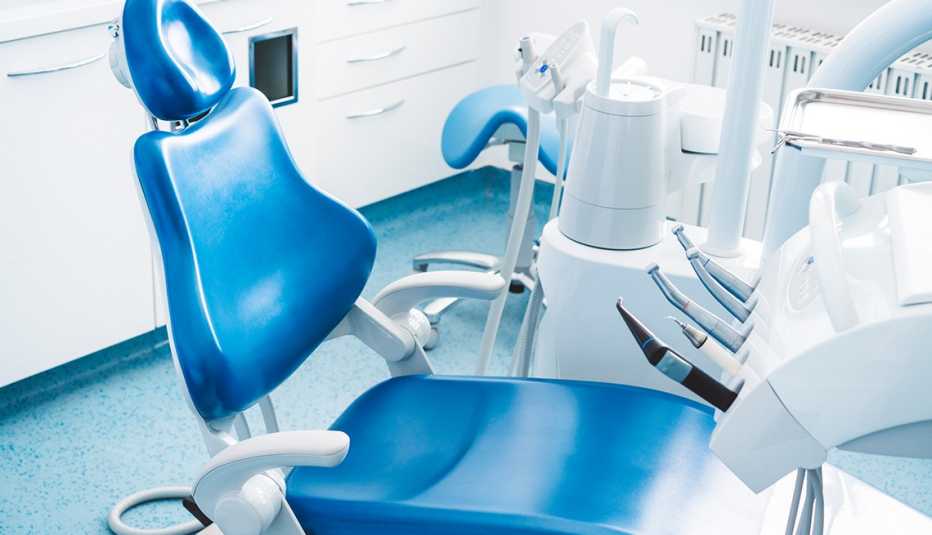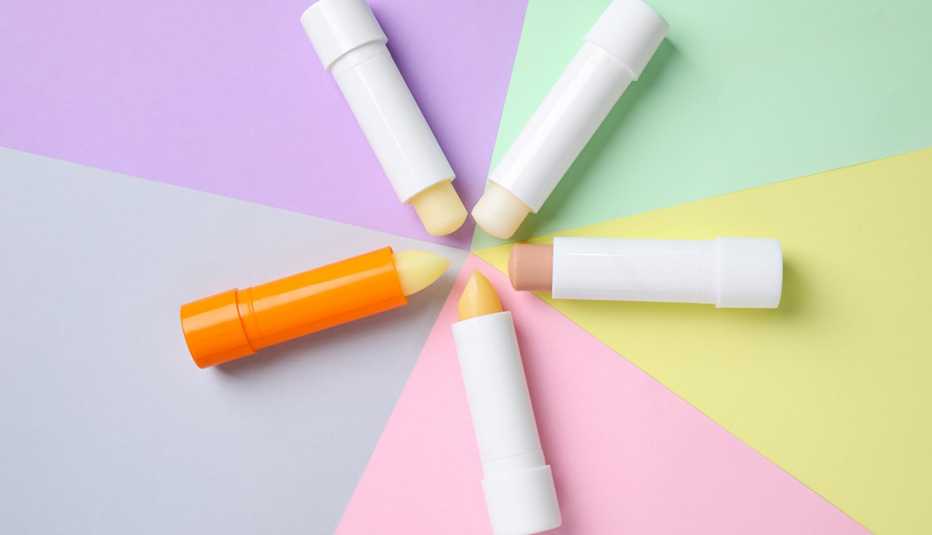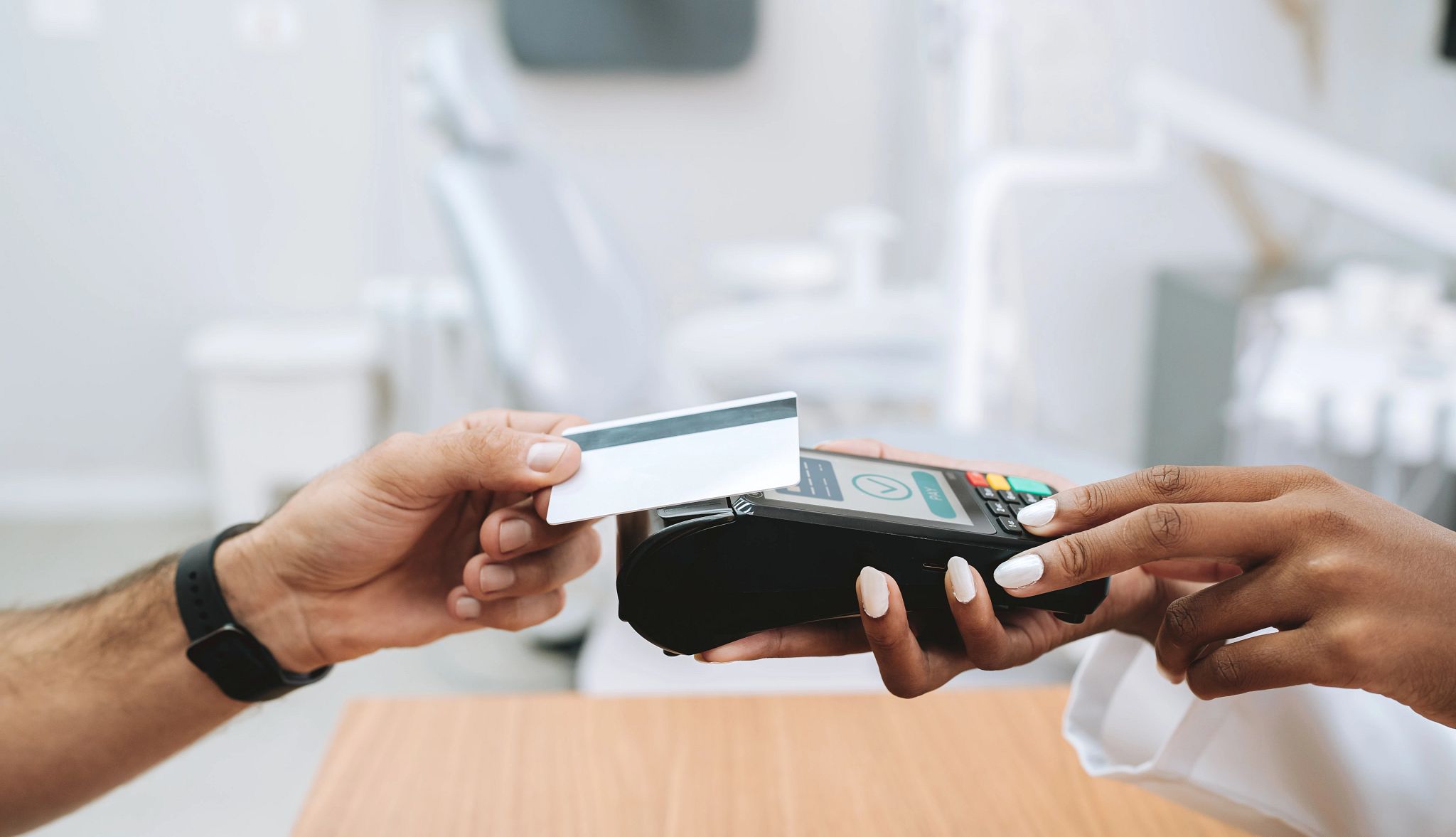AARP Hearing Center


In this story
The basics • Be proactive • Dental repair • A healthy mouth • Looking good • Affording better teeth
Good oral health is vital for a healthy smile, but it’s also essential for overall wellness. Research suggests that periodontal disease may play a role in many health problems that affect those over 50, including cardiovascular disease, type 2 diabetes, rheumatoid arthritis, inflammatory bowel disease, Alzheimer’s and other forms of dementia, and even some cancers. The root cause may be the body’s response to chronic inflammation.
While it’s not clear that gum disease directly causes these other conditions, “the suspicion in medicine and dentistry is that when [these health conditions and gum disease] exist together, they oftentimes kind of fuel each other’s severity,” says Theresa Wang, a prosthodontist and vice president of clinical innovation with ClearChoice Dental Implant Centers in Schaumburg, Illinois.
Want to make sure you’re doing all you can to preserve your pearly whites and reduce your risk of disease? Here’s how.
START WITH THE BASICS
1. Visit the dentist regularly
Aim to get a dental checkup and teeth cleaning at least once a year or, even better, every six months. (Some insurance plans allow for up to three teeth cleanings a year.) But if you have gum disease, diabetes or cardiovascular disease, it could be better to visit more often. Find a dentist who makes you feel comfortable so you don’t dread going in for regular checkups. “I encourage patients to get into their dentist’s office on a regular basis,” says dentist Arwinder Judge, chief clinical officer at Aspen Dental Management in Naples, Florida. “It’s one of the most important things you can do for your oral health.”
2. Customize your dental visits
That all said, if you’re even seeing the dentist at all, you’re ahead of the game: About 4 in 10 older adults didn’t have a single dentist visit in 2022. How often do you need to go? That’s between you and your dentist. While twice a year is a common schedule, it’s not a standard. “There is nothing magical about a six-month checkup,” says Stephen Shuman, director of the Oral Health Services for Older Adults program at the University of Minnesota School of Dentistry in Minneapolis. People with excellent oral health may only need to go annually; those with challenges may need to go every three months.
3. Address anxiety
The anxiety many experience at the dentist can keep them from seeking care. Olga Krikunenko, a dentist and owner of Mint Dental in Franklin, Massachusetts, says dentists need to understand what patients are afraid of and tailor their care around that. “We encourage patients to bring things of comfort to their appointments, or we provide headphones and movies to watch,” she says. “But … we also prescribe medications based on patients’ needs to help calm their nerves before procedures. Additionally, some offices can do treatment under sedation for certain circumstances. But ultimately, the longer you don’t go to the dentist, the more treatment may be needed, and that will in itself cause people to have anxiety about going.”
4. Brush twice a day for two minutes
The American Dental Association (ADA) has long recommended brushing your teeth with a fluoride toothpaste for two minutes at least twice a day. Dental professionals say the best times to brush are before breakfast and before bed. If brushing isn’t possible after lunch, rinse your mouth with water or chew sugar-free gum to clean your teeth until you can brush later, says Huzefa Kapadia, a dentist with Kapadia Dental Care in Detroit and Waterford, Michigan. And toss that manual toothbrush if you’ve had it longer than three months — the ADA says the worn-out bristles won’t do a good job of cleaning your teeth.
5. Wait 30 minutes after eating to brush
Instead of brushing right after a meal, wait at least a half hour, especially if you ate something acidic. This gives the enamel in your teeth time to remineralize and build back up again. You can also rinse your mouth with water or chew sugar-free gum until you can brush your teeth later.
6. Go electric
Research suggests electric-powered toothbrushes are more effective at removing plaque than manual ones. “When you automate how the individual bristles actually work, it imparts an energy into the saliva that creates millions of little bubbles — so in essence, you can interrupt bacteria even beyond where the bristles touch the tooth,” says Tim Donley, a periodontist who practices in Bowling Green, Kentucky. Krikunenko recommends using plug-in rechargeable electric toothbrushes because they’re more powerful than battery-operated toothbrushes.
7. Brush at a 45-degree angle
If you’re holding your toothbrush at a 90-degree angle to your teeth as you brush, you’re doing it wrong. Instead, place your brush at a 45-degree angle, advises Melissa Torres, a cosmetic dentist based in Reading, Massachusetts. This slight tilt is better for removing plaque and bacteria along the gum line.
8. Use small circles on teeth
Instead of broad back-and-forth horizontal movements, brush in small circles from top to bottom on each tooth. “Brushing back and forth can actually make the gums recede a little bit,” says Alex J. Delgado, associate professor and director of continuing dental education at the University of Florida College of Dentistry. However, Kapadia says if you’re using an electric toothbrush, simply hold it against each tooth surface for a few seconds. “You can make very small, gentle movements to guide the brush along your teeth and gums,” he says. “Don’t press hard. Light pressure is sufficient. Let the brush do the work.”
9. Switch to your nondominant hand when brushing
If your gum line is receding, switch it up periodically and brush with your nondominant hand. This will put less pressure against your gums.
10. Be gentle
Always opt for soft-bristle or extra-soft-bristle brushes. “You should never, ever use a hard toothbrush,” says Bill Dorfman, a Los Angeles–based cosmetic dentist and author of Billion Dollar Smile: A Complete Guide to Your Extreme Smile Makeover. “Years and years of brushing with a hard toothbrush will brush away your gums and cause attrition of the enamel on the front surface of your teeth,” he adds. Torres agrees, and she says patients should always use an extra-soft or soft-bristle toothbrush. She says this will “be gentle enough that it’s not going to cause any harm to the gum tissue, but still abrasive enough to remove the plaque and bacteria off the teeth.”
11. Get smart
If it fits your budget, Donley recommends electric toothbrushes that incorporate artificial intelligence and use apps to alert you if you’re using the wrong amount of brushing pressure or if you’ve missed certain spots. The Philips Sonicare 9900 Prestige ($379.96) claims to adjust in real time to your brushing, while the Oral-B Genius X Limited Electronic Toothbrush ($199.99) uses artificial intelligence to instantly recognize your brushing style. The BLU Smart Toothbrush and App ($99.95) features a cavity tracker for each tooth.
12. Floss every day for good gum health
There’s a reason your dentist asks if you’ve been flossing — because when you don’t, bacteria, plaque and tartar (hardened plaque) irritate and inflame your gums. “Flossing is really, really important, especially in between the teeth where plaque will sit, because toothbrush bristles simply can’t get that far in,” says Krikunenko. Flossing well is associated with lower levels of gum disease. Ideally, you should floss when you brush your teeth, but at the very least, floss before bed.
13. Go high-tech with your flossing
While it’s crucial to do it daily, navigating a string in between teeth can be challenging. Sonya Dunbar, a registered dental hygienist and oral health educator in Jacksonville, Florida, recommends using a water flosser to clean between your teeth. Since it shoots water into your mouth, it’s another tool that does the work for you.
14. When red means go
If you see blood when you floss, it indicates that your gums are inflamed by plaque buildup and you need to ramp up your flossing. The more you floss, the less you may bleed, and the better your oral health will be. “Spend the time to floss between the teeth,” says David Frank, owner and founder of Walden Dental in Austin, Texas. “Approach flossing as you would if you’re towel-drying your back, rubbing the floss forward and backward like a saw to go gently into the gum line in order to remove the tartar and plaque and bacteria that get stuck between the gums and the roots of your teeth.”
15. Floss effectively
Floss picks or string? Waxed or unwaxed? While using floss picks is better than not flossing at all, they’re not as effective as string. In addition to adding more plastic to the environment, they can spread bacteria from one location to another. It’s better to use string floss so you can wrap it around teeth and move down the string so each tooth has a fresh area. Opt for thicker, more rigid floss rather than slick, thin floss. Also, rather than simply flossing in an up-and-down motion between each tooth, floss lower, along the grooves of your gum line. “If you think of your teeth coming together with the gums in the middle, forming a little V, you want to go down each side of that V,” Krikunenko says. Unwaxed or waxed, flavored or not — that’s up to you. “It’s about incorporating whatever works for your routine and whatever you’re going to be willing to actually do every day. That’s the key,” says Wang.
16. Eat to prevent plaque
If your gums bleed when you brush, it usually means there is plaque buildup on your teeth that is inflaming the gums. Try eating hard, crunchy foods such as carrots, nuts and seeds to help slough off plaque. Cutting back on sugary foods and drinks and addressing dry-mouth symptoms can also help reduce your risk of developing cavities.
17. Try a water flosser
There’s some debate among dentists about whether water flossers work as well as traditional flossing. Donley opts for water power: “I have not used string floss in 20 years, but I have been wonderfully effective in cleaning in between my teeth using a water flosser,” he says.
Meanwhile, Dorfman argues that “water flossers are good at removing some debris, but they do not replace flossing in any way, shape or form.” Kapadia says both water flossers and regular floss help, so dentists should be flexible. “Some patients will never floss, including my own dad, who is 83 years old,” he says. “We should be open to other treatments, and a water flosser can do an adequate job of removing food and plaque. It’s better than nothing!”
Consider trying a water flosser if you have mobility issues that make traditional flossing challenging, or if you simply like the convenience. The American Dental Hygienists’ Association recommends water flossers that deliver water pressure of 50 pounds per square inch (psi) to 90 psi, a level that’s safe for both healthy and inflamed gums.









































































You Might Also Like
Keep Your Memory Sharp
This Smart Guide features science-backed ways to having a healthier, happier brain, now and in the future
How to Build Healthy Habits
These tips can help create changes that positively impact your well-being for years to come
Great Ways to Curb Sugar Cravings
From eating a protein-packed breakfast to ‘urge surfing,’ we have tips to stop craving sweets
Recommended for You